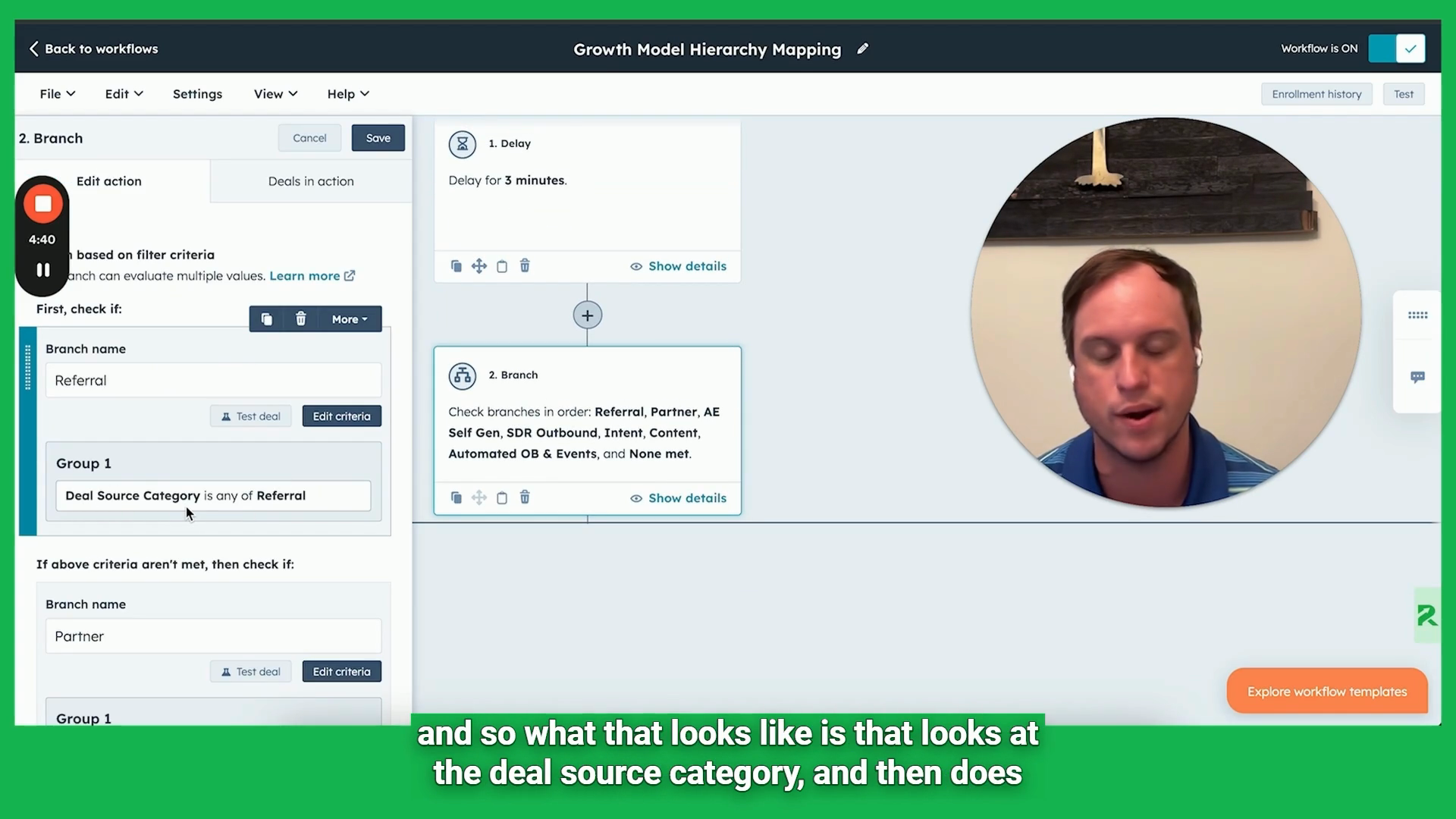Table of Contents
HubSpot’s revenue attribution turns marketing reports into revenue reports. Instead of guessing which campaigns worked, you can see exactly how every ad click, email, or page view contributed to closed-won deals. It’s how marketing revenue attribution finally moves from theory to proof and how teams use real data to grow smarter.

To understand how it works, it helps to start with the basics. This means looking at what revenue attribution actually is and why it matters for marketing performance.
TL;DR: What Will You Learn About HubSpot Revenue Attribution?
-
HubSpot Revenue Attribution links every ad click, email, and page view to closed-won deals, showing what actually drives revenue.
-
It’s built into HubSpot Marketing Hub Enterprise, combining marketing and sales data in one place for clearer ROI reporting.
-
You can choose from multiple attribution models (first-touch, full-path, and more) to see how campaigns influence the buyer journey.
-
Businesses using HubSpot’s reporting and automation tools have seen measurable growth — including higher inbound leads and stronger ROI.
-
AI-powered attribution and content optimization in 2025 made it even easier to uncover which efforts deliver real results.
What Is Revenue Attribution and Why Does It Matter?

What marketing revenue attribution actually means
HubSpot’s revenue attribution connects your marketing activity to real business results. It links campaigns, ads, and emails to closed deals so you can see where revenue is coming from. Marketing revenue attribution helps teams understand the impact of their work and make better decisions about where to invest.
Why marketers struggle without it
Many teams have data spread across too many tools. Ads live in one platform, emails in another, and CRM data somewhere else. Reports rarely tell the same story, which makes it hard to see what’s working.
It’s no surprise that 30.55% of marketers say access to data is their most valuable tool for shaping effective marketing strategies, while 29.59% directly link improved ROI to data-driven attribution reporting. Without a single source of truth like HubSpot, it becomes harder to measure success or plan what comes next.ces. Ads are tracked in one platform, emails in another, and CRM data somewhere else.
How HubSpot revenue attribution fixes it
HubSpot Revenue Attribution Reporting in Marketing Hub Enterprise brings everything together. It connects marketing data to sales results and shows which campaigns and channels generate revenue. When you can see the full picture in one platform, you can plan with confidence and focus on what consistently drives growth.

How Does HubSpot Handle Marketing Revenue Attribution?
Now that you know what revenue attribution is and why it matters, it’s time to look at how HubSpot puts it into action. The HubSpot Revenue Attribution Reporting tool inside Marketing Hub Enterprise is where marketers connect the dots between their campaigns and real revenue. It’s built to show what worked, where it worked, and how much impact it had.

Report types available in HubSpot
HubSpot gives you several ways to measure marketing influence on revenue. You can create contact-create, deal-create, and revenue attribution reports. Each one looks at a different stage in the customer journey. Together, they give you a clear picture of how marketing activity supports pipeline growth and closed-won revenue.
Attribution models supported in HubSpot
Every company measures success differently, and HubSpot’s attribution models let you see performance from multiple angles. You can choose from first-touch, last-touch, linear, time-decay, U-shaped, W-shaped, or full-path models. Each one distributes credit differently across interactions, helping teams understand how early awareness, mid-funnel engagement, and late-stage conversions contribute to revenue.
Subscription tier required
Full revenue attribution reporting is available in HubSpot Marketing Hub Enterprise. The Enterprise tier includes advanced tools for tracking multi-touch attribution and combining marketing and sales data inside one CRM. This level of insight is what makes it possible to prove ROI at every stage of the buyer’s journey.
Interaction types HubSpot tracks
HubSpot attribution reports pull data from a wide range of interaction types. These include page views, form submissions, ad clicks, social engagements, email opens, and more. You can also customize which interactions matter most for your reporting. This flexibility makes it easier to match HubSpot’s tracking to your unique sales process and customer behavior.
HubSpot Onboarding
New to HubSpot? RevPartners’ HubSpot Onboarding helps you build a clean foundation so your revenue attribution reports stay accurate from day one.
How Do You Set Up Revenue Attribution in HubSpot?
Once you understand what HubSpot’s revenue attribution can do, the next step is setting it up. The process only takes a few minutes, and once it’s live, you’ll have a clear view of how every campaign contributes to real revenue. Here’s how to get started.
Step 1: Go to the Reporting tool
In your HubSpot account, navigate to Reports, then select Create Report, and choose Attribution. This is where all your reporting options live, including contact-create, deal-create, and revenue attribution reports.
Step 2: Select “Revenue” as your data source
When creating your report, select Revenue as the data source. This tells HubSpot to track closed-won deals instead of early-stage activity. You can then pick your attribution model, apply filters, and decide which campaigns, assets, or channels you want to analyze.
Step 3: Choose your dimensions and timeframe
Next, define what you want to measure. Choose your dimensions (e.g. campaign, asset type, interaction) and select a date range that fits your reporting cycle. These filters let you see how specific campaigns or time periods influenced revenue.
Step 4: Save and share your report
Once your setup looks right, save the report to your dashboard or export it for your team. This makes it easy to monitor revenue attribution alongside other key metrics and keep everyone aligned on what’s driving growth.
Setup tips and best practices
To get accurate results, make sure your HubSpot tracking code is installed on every page. Check that your deals are correctly marked as closed-won in HubSpot, use UTM parameters in your marketing links, and log offline or external activities wherever possible. Clean, consistent data will give you the most reliable insights.
The Revenue Performance Model
Do you want to track the entire revenue journey in your CRM so you can see what's broken, why it happened, and where to fix it?
Download the Revenue Performance Model HERE
.png?width=2986&height=2233&name=RPM%20PDF%20Preview%20(2).png)
What Makes HubSpot’s Revenue Attribution Different from Other Platforms?
After setting up revenue attribution in HubSpot, the next question is how it stacks up against other tools. Many CRMs offer attribution reporting, but few connect marketing and sales data as seamlessly as HubSpot Revenue Attribution Reporting in Marketing Hub Enterprise.

HubSpot vs. other platforms
Here’s how HubSpot compares to two common alternatives, Salesforce Marketing Cloud and Marketo Engage.
|
Feature |
HubSpot |
Salesforce Marketing Cloud |
Marketo Engage |
|
CRM integration |
Built directly into the HubSpot CRM |
Requires integration setup |
Requires integration setup |
|
Multi-touch attribution models |
Included out of the box (first-touch, W-shaped, full-path, etc.) |
Available with customization |
Limited models |
|
Ease of setup |
Simple, no code required |
Complex, often needs admin support |
Moderate complexity |
|
Pricing and value |
Included with Marketing Hub Enterprise |
Higher cost, add-ons required |
Similar cost, fewer native features |
HubSpot leads with simplicity and accessibility. Its attribution tools are part of the same ecosystem your teams already use, which means you don’t need third-party connectors or developer help to get started.
In 2025, HubSpot’s revenue reached $3.07 billion and its CRM market share climbed to 35%, driven in large part by the growth of its attribution and campaign reporting tools. That momentum underscores how central accurate reporting has become to modern marketing strategy.
Unique strengths of HubSpot
HubSpot’s biggest advantage is that everything lives in one CRM. Marketing and sales data share the same system, so attribution reports reflect the full customer journey from first interaction to closed deal.
The platform includes built-in multi-touch models and even allows asset-level attribution, helping teams see which specific campaigns, landing pages, or content pieces influenced revenue. Businesses using HubSpot’s Marketing Hub have reported a 129% increase in inbound leads after enabling campaign attribution and automation features.
In 2025, users who adopted HubSpot’s new AI-powered attribution and content optimization features saw inbound leads rise by 99% and web traffic grow by 143% within six months. These results show how far HubSpot’s automation and analytics tools have evolved, combining powerful AI with the same unified CRM that teams already rely on. These insights are available without writing code or managing separate tools.
Ready to see how HubSpot connects every click to real revenue?
Explore HubSpot’s Marketing Automation tools to track, report, and grow smarter.
Affiliate disclosure: If you sign up through this link, we may earn a commission at no extra cost to you.
Limitations to consider
Like any platform, there are trade-offs. Revenue Attribution Reporting is only available in Marketing Hub Enterprise, so smaller teams using Starter or Professional won’t have access to it.
Offline interactions, such as phone calls or trade shows, may not appear unless they’re logged manually. Getting accurate reports also depends on proper setup: tracking code, UTM parameters, and deal data must be consistent across the CRM.
What Are the Key Benefits of Using HubSpot Revenue Attribution?
HubSpot Revenue Attribution Reporting is more than a visibility tool. It helps teams run smarter, faster, and more efficiently by aligning marketing and sales around the same performance metrics. When everyone measures success the same way, it’s easier to focus on growth that actually lasts.

Better alignment between marketing and sales
Revenue attribution gives both teams a shared language for performance. Marketers can see how their campaigns contribute to pipeline, and sales can trace deals back to the activities that helped move prospects forward. This shared visibility builds confidence as 87% of marketers using HubSpot or a similar CRM feel confident in their reporting and strategy, compared to only 52% for those without a CRM or revenue attribution tool. Alignment around accurate data creates accountability and makes it easier to focus on what’s truly driving revenue.

Clear insight into what really drives revenue
With HubSpot’s attribution reports, you can identify which campaigns, channels, and assets lead to closed-won deals instead of just clicks or form fills. The data highlights where real growth is coming from, so teams can stop chasing vanity metrics and double down on what consistently delivers results.
Smarter budget allocation
When you know which efforts create revenue, you can plan budgets with confidence. HubSpot Revenue Attribution Reporting shows ROI by campaign and channel, helping teams invest in the initiatives that perform best. Over time, this kind of clarity reduces wasted spend and improves overall marketing efficiency.
Use cases across industries
Attribution looks different depending on the business.
- Mid-sized B2B SaaS companies use HubSpot to connect ad performance to renewals and expansion revenue.
- Manufacturing firms use it to track which content or trade show campaigns create high-value deals.
- Professional services teams use it to prove which nurture sequences or email campaigns turn leads into clients.
Having one platform that tracks all of this makes revenue reporting simpler and more credible across departments.
Measurable results and impact
Companies using HubSpot’s advanced reporting often see faster insights and lower acquisition costs. Many reduce customer acquisition cost (CAC) by consolidating all their reporting inside HubSpot instead of juggling separate analytics tools. The payoff shows up quickly as 84% of HubSpot customers report higher company revenue after adopting attribution and integrated CRM reporting tools, and 95% see a positive ROI once multi-touch attribution and campaign tracking are fully implemented. That level of visibility gives teams the confidence to plan strategically, forecast more accurately, and double down on what drives growth.
What Are Common Challenges and How to Avoid Them
Even with a strong system like HubSpot, revenue attribution isn’t automatic. Reports depend on how the data is set up and how people use the platform. A few areas tend to cause problems, especially when teams are just getting started.
Data quality issues
Accurate attribution starts with clean data. If tracking codes aren’t added to every page or deals aren’t updated in HubSpot, the reports can look off. Taking time to check your tracking setup and making sure sales updates deal stages regularly will keep results reliable. It’s a small habit that protects the accuracy of everything that follows.
Picking the right attribution model
HubSpot includes several attribution models: first-touch, last-touch, linear, and full-path. Each one answers a different business question. If you’re trying to understand what brings people into the funnel, start with first-touch. When you need to know what activity pushes revenue across the finish line, full-path is more helpful. Sticking with one approach long enough to see patterns matters more than switching models often.
Capturing offline and external interactions
HubSpot can’t measure what it doesn’t see. Trade shows, phone calls, and meetings that happen outside the platform need to be added manually or imported through integrations. Bringing these touchpoints into HubSpot helps you see how marketing and sales work together across both online and offline activity.
HubSpot Integrations
Connect your CRM, ad tools, and analytics stack seamlessly. RevPartners’ HubSpot Integrations make attribution across platforms easier and more reliable.
Subscription level and cost
HubSpot Revenue Attribution Reporting is available in Marketing Hub Enterprise. Smaller teams using other tiers can still start measuring performance with campaign-level reports and build toward full attribution as they grow. Taking that phased approach keeps things affordable and ensures the foundation is solid before moving into advanced reporting.
Keeping teams aligned
Attribution works best when marketing and sales treat HubSpot as their shared source of truth. That means using the same definitions for lead stages, updating deals the same way, and agreeing on what counts as a meaningful interaction. When both sides follow the same process, reporting becomes more accurate and conversations about performance become a lot easier.
Frequently Asked Questions
What is revenue attribution in HubSpot?
HubSpot revenue attribution reports connect closed-won deal revenue to the marketing interactions and campaigns that influenced it. The data shows how different touchpoints contribute to sales, helping teams understand what drives real results.
Do I need Marketing Hub Enterprise for revenue attribution?
Yes. The full version of HubSpot Revenue Attribution Reporting and other advanced analytics tools are part of Marketing Hub Enterprise. This tier includes multi-touch attribution models and revenue-based reporting for marketing and sales performance.
Can HubSpot show attribution by campaign or asset?
Yes. HubSpot can break down revenue attribution by individual campaign or asset. You can see how a blog post, landing page, or ad campaign contributed to closed revenue and compare performance across channels.
Which attribution model should I use in HubSpot?
The right model depends on your goal. First-touch helps identify what creates awareness. Last-touch highlights what drives conversions. W-shaped and full-path models spread credit across multiple touchpoints for a broader view of influence.
Can offline interactions be included in HubSpot revenue attribution?
Yes, but they need to be recorded inside HubSpot. Deals created in the CRM or activities logged manually can appear in your attribution reports. Data from external systems should be integrated so offline interactions are part of the full customer journey.
Ready to See HubSpot Revenue Attribution in Action?
Want to see how attribution connects every marketing effort to real revenue?
Start your free HubSpot trial and explore the CRM, reporting, and automation tools that make proving ROI simple.
Affiliate disclosure: If you start a trial through this link, we may earn a commission at no extra cost to you.




.png)


